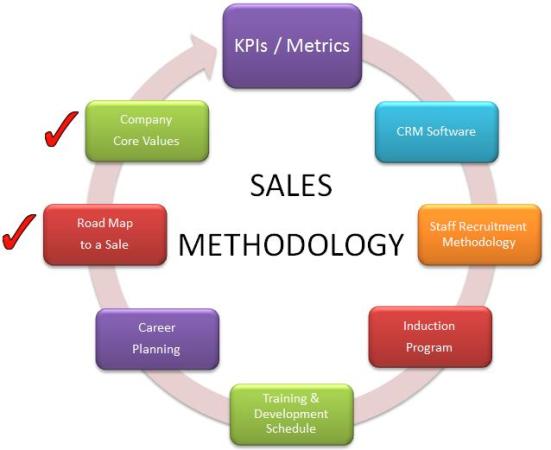KPIs / Metrics: Building An Effective Sales Team
Mark Bradman, 25 February 2012
As you continue on your mission to ramp up your sales through the development and implementation of a Sales System or Methodology, the next component to consider is your KPIs and Metrics.
Hopefully you’ve already set your Sales Targets. But don’t tick this component off as having been completed just on the strength of merely having them.

The wonderful thing about sales is that our performance is so easily measurable. All we have to do is look on the scoreboard. The opposition team’s score is what we call our “Sales Target”, while our own score is the total of our “Actual Sales”. If “Actual Sales” is higher than our “Sales Target”, we win. If not we lose. And best of all, win or lose, we get to play a new game each and every month.

The setting of targets is a topic in itself:
• Do you set Individual or Team Targets?
• Do you link remuneration to Targets?
• How do you balance a target between what’s realistic and what’s too easily achievable?
• Should you differentiate between new and existing business?
• What about seasonal adjustments versus downturn or upturn in business?
While the answers to such questions are outside the scope of this blog, the strategy I recommend is to always start with the assumption that you know your business better than anyone else, and then consult with experts in your field to take into account any factors you may have overlooked.
The point to take home here is that there is more to KPIs or metrics than just Sales Targets.
In most sports, there are other metrics by which to judge performance that don’t normally show on the scoreboard:
• Meters Gained
• Passes Made & Received
• Number of Intercepts
• Number of Rebounds
And as any great coach will tell you, if you do these “Basics” well on a consistent basis, not only will you keep the scoreboard ticking, more often than not you’ll have a winning game.
The goal of every salesperson is obviously to go through the season undefeated or win more often than you lose. If you do lose, it would be good to be able to pinpoint where and why you lost. Better still would be to realize you are losing partway through a game and to take corrective action while you still have a chance.
So what are the Metrics or Key Performance Indicators (KPIs) for your business?
Again, this is something you need to identify yourself from experience and in consultation with the latest technologies and trends as to what is and what’s not relevant to your individual business.
As an example, in a Call Centre environment these could include such things as:
• Number of Inbound Calls
• Number of Outbound Calls
• Number of Dropped Calls
• Average Call Waiting Times
• Average Call Length
For BDMs, these could include:
• Number of New Leads
• Number of Appointments – Inside, Outside
• Number of Product Demos
• Number of Proposals
• Conversion Rate
The benefits of having clearly defined KPIs or Metrics include:
• Ability to measure employees against one another
• Ability to identify and address areas of underperformance
• Ability to take timely remedial action
• To instill fun and competition into tasks that can at times appear laborious
• To improve performance in the role’s basics
Now that you’ve identified the Road Map to a Sale (the playing strategy), your Core Values (the rules of the game) and set your KPIs or Metrics (put up the Goal Posts), you are ready to play. All you need now is the playing equipment – software to drive it all – which we’ll cover in the next article.

